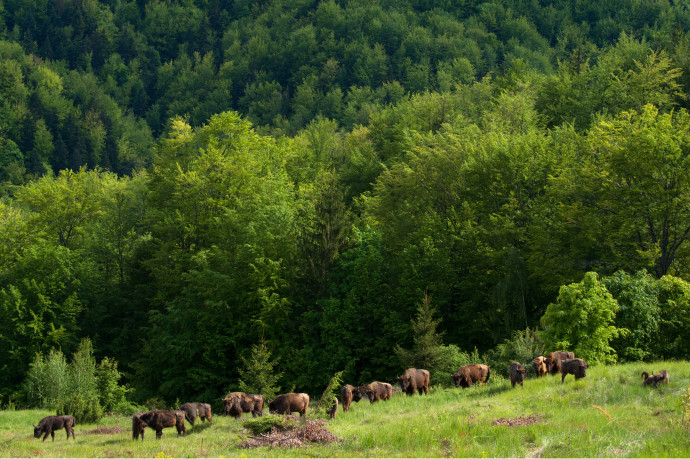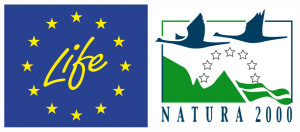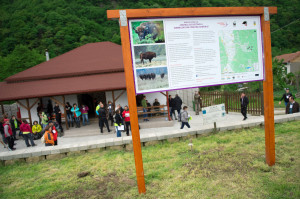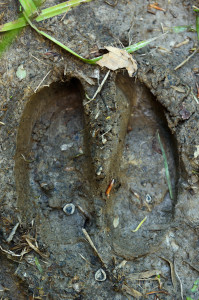The European Commission has approved the LIFE proposal “Urgent actions for the recovery of European Bison populations in Romania”, developed by Rewilding Europe and WWF Romania to support the reintroduction of the European bison into the Tarçu Mountains Natura 2000 site in the Southern Carpathians rewilding landscape. The funding will be used to build a viable population of European bison in this area, by releasing in total 100 animals in the coming five years.

Through LIFE Nature, the Commission will provide 75% of in total 1,809,421 euro, which is an amount of 1,357,066 euro for the period 2016-2020. Rewilding Europe and its partner organisations will provide the remaining 25% of this budget as co-funding.
Rewilding Europe and WWF Romania have first reintroduced the European bison into this area in May 2014, with a subsequent translocation in June 2015. The animals originate from six different European countries and the population now totals 30 animals, including 28 adults and two now-born calves in 2015 – so a good base has been created to now continue bringing the species back.
Apart from the reintroductions and the infrastructure needed for two different reintroduction sites, a substantial part of the funding will be used to work with the local communities and stakeholders to ensure they fully participate in and benefit from the initiative. Therefore, enterprise development connected to bison, monitoring by bison rangers, a youth programme, training, research and capacity building, a visitor center, an indoor exhibition, reducing possible human-bison conflict, and promotion of local products related to bison are also among the activities.

– ‘’We are very excited about this support from the European Commission, which is extremely important for making the bison reintroduction a success’’, says Frans Schepers, Managing Director of Rewilding Europe. ‘’This shows confidence in our initiative and we are sure this will leverage additional support we will still need, like from zoos and wildlife parks from all across Europe that have already been so generous in providing us with live animals, veterinary care, GPS collars and financial contributions’’, he continues.
– Orieta Hulea, Country Manager of WWF Romania adds: ‘’The Carpathian Mountains, one of the former strongholds of European bison, is one of the priority areas for our Danube Carpathian Programme, and we are proud that the European Commission has recognized the opportunities this area provides for the comeback of the European bison, as a draw-card for rewilding and wilderness development’’.
The objective that Rewilding Europe and WWF Romania have set for the LIFE project is to create a free-roaming, viable population of at least 193 bison by 2020, further growing towards an estimated 300 in 2024. By bringing back the European bison, not only a substantial contribution is made towards the conservation of this species in Europe, as laid out in the IUCN Species Action Plan for the European bison. It is also part of a large rewilding initiative in Romania, where Rewilding Europe and WWF Romania work together to create one of the largest contiguous wild areas in Europe numbering some 3 million hectares, connecting various protected areas, core wilderness areas and rewilding zones across the larger, southwestern Carpathians mountain range. This area consists of 6 different Natura 2000 sites and it is here where the European bison will be able to play its important ecological role in its natural habitats.

Both organisations have set a joint 10-year vision for the Southern Carpathians rewilding area, one of the now eight landscapes in Europe, nearly 110,000 hectares in size where rewilding is pioneered as a new conservation approach under the umbrella of the wider Rewilding Europe initiative. The ultimate goal is to develop a landscape where wild nature, natural processes and wildlife thrive, benefiting the local economy through different kind of enterprises that are linked to this use of the land. The first enterprises are now pioneered and start to emerge, including guided tours to track bison in the wild, safari-style camps to stay in the wilderness, bear watching facilities, local product development and others.
In particular the Municipality of Armeniş has been extremely helpful making this a success so far, together with the State Forest Department (Romsilva), the local hunting associations, and many different zoos, wildlife parks and scientific institutions in Europe.
The LIFE project will start on 1 January 2016, meaning that during the remaining part of this year ongoing activities will continue, among others enterprise development, monitoring of the existing herds, partnership building, planning and further fundraising to create a further base for success.
Coming back, but still vulnerable
The European bison or wisent is the continent’s largest wild land mammal. Once, it roamed all across Europe, except possibly Northern Scandinavia and the southern parts of the Iberian Peninsula and Italy. It was hunted to extinction until it finally became extinct in the wild in 1927. By then, only 54 individuals remained, all in captivity. A slow but successful breeding and reintroduction effort in Central and Eastern Europe helped to establish a wild population again. The global population of the European bison is now said to be 5 046 (January 2014). Of these, only some 3 230 live in free or semi-free herds.

Missing link in the ecosystem
The European bison is a charismatic animal with a long-standing heritage in Romanian history and culture, loved by the general public. For restoring European ecosystems such as the Tarçu Mountains, it is important to bring back this symbolic animal at it is a key species for rewilding and for preserving wilderness strongholds. The bison’s grazing and browsing ability helps maintain a mosaic of forest areas and grasslands, creating more variation and structure in the landscape. It is a species that, if successfully re-introduced and its habitat effectively preserved, will help maintain the ecological corridors across the entire Carpathian Mountain range and allowing natural processes to occur.
Why in the Southern Carpathians?
This has been one of the core areas for bison since ages back. However, it was finally made extinct here in 1762. The Carpathian Mountains have been identified as a priority region for improving the long term survival of the bison, since there is suitable habitat and that is relatively well connected. The place where the animals are released is in the vast and wild Tarçu Mountains Natura 2000 site, with a surface of some 59,000 hectares.
For more information about the European bison see the Bison Rewilding Plan 2014–2024.
